May 31, 2025 | 14:39 GMT +7
May 31, 2025 | 14:39 GMT +7
Hotline: 0913.378.918
May 31, 2025 | 14:39 GMT +7
Hotline: 0913.378.918
Deputy Minister of Agriculture and Environment Tran Quy Kien chaired the announcement ceremony for the results of the project "Comprehensive survey of minerals and completion of the 1:50,000-scale geological map of the Northwest region to support sustainable socio-economic development planning" (Tay Bac Project). The event was held on the morning of March 28 in Hanoi.
Tran Binh Trong, General Director of the Department of Geology and Minerals, stated that the Prime Minister approved the Tay Bac Project in 2017. This is one of the largest fundamental geological survey projects nationwide, covering an expansive area with diverse subjects and an implementation timeline lasting nearly eight years.
The Tay Bac Project officially completed all of its assigned tasks in 2024. Notably, project stakeholders have mapped mineral geology at a 1:50,000 scale over an area of 13,081 square meters and established 498 drill holes with a total depth of more than 46,000 meters, with 90% of the drill holes encountering ore bodies—a remarkably high rate.
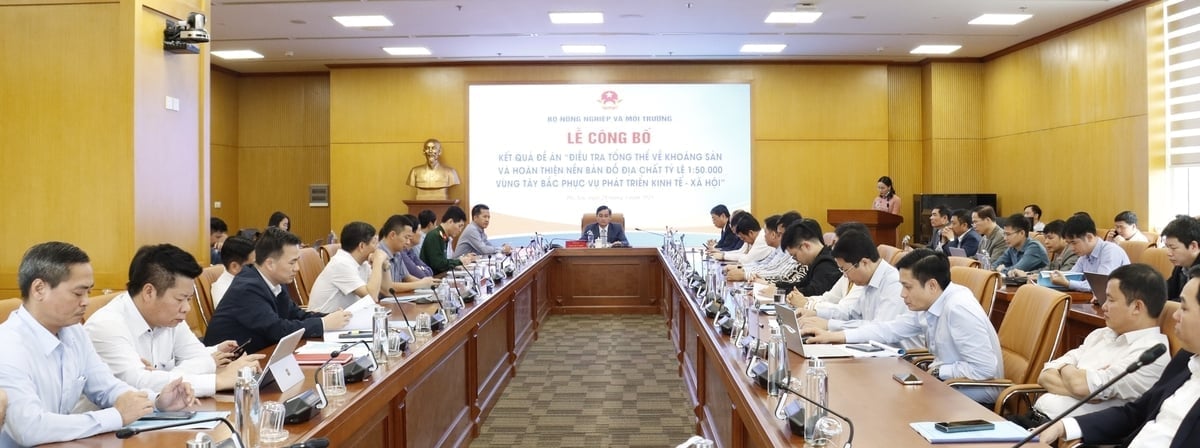
The announcement ceremony for the Tay Bac Project results saw the attendance of representatives from various ministries, agencies, and 14 provinces in the Northwest region. Photo: Nguyen Thuy.
According to General Director Tran Binh Trong, one of the project's key achievements was the discovery and assessment of 110 mineral deposits, containing 25 different types, including rare earths, tin-tungsten, gold, copper, antimony, ornamental stone, and industrial limestone. Among these, 17 are large-scale deposits, 43 are medium-sized, and 50 are small-scale, making these figures two times higher than the initial target.
The Tay Bac project has identified seven areas with potential deep-seated mineral deposits and forecast 15 zones of magma rock distribution with strategic mineral potential. The project has also conducted detailed investigations on three geothermal areas in Dien Bien, Lai Chau, and Son La, in addition to uncovering valuable geological relics and geomorphological landscapes.
Notably, the project has completed a 1:250,000-scale geological and mineral map covering the entire northern region and Nghe An province. Project participants have also collected and delivered 14 sets of representative mineral samples to provincial authorities.
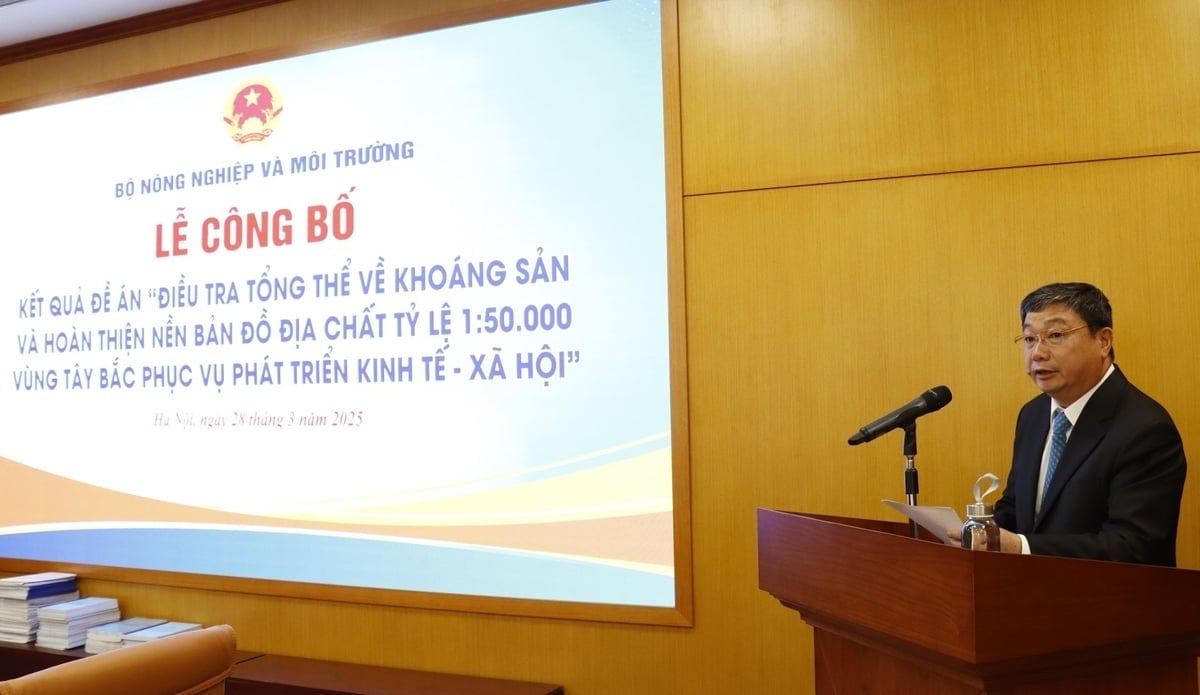
Tran Binh Trong, General Director of the Department of Geology and Minerals, reported that upon completing the Tay Bac Project, specialized agencies discovered and performed an assessment on 110 mines that contain 25 types of important minerals. Photo: Nguyen Thuy.
Subsequently, Tay Bac Projected has integrated 62 areas with potential mineral resources into the national mineral exploration plan for the years between 2021 and 2030, with a vision extending to 2050. This scientific foundation enables local governments to propose appropriate exploration and licensing strategies as well as improve their control over illegal mining activities.
Another significant long-term achievement of the project is the development and standardization of a geological and mineral database for the Northwest region. Accordingly, the Tay Bac Project has digitized and integrated mapping data, survey results, analytical samples, and information on mines and ore points into a centralized, modern database. This system allows for quick searches, flexible data sharing, and online connectivity, thereby promoting an opportunity for the development of a national digital geology platform.
Moreover, the databse cann be a crucial foundation for the comprehensive digital transformation of the geological sector, with a focus on enhancing state management, resource planning, and investment attraction for sustainable mineral exploitation.
Deputy Minister Tran Quy Kien emphasized the critical role of the Tay Bac Project in providing both scientific and practical foundations for the effective use of mineral resources and the sustainable development of the Northwest region.
After eight years of implementation, the project has completed an extensive workload, surpassing many of its initial targets. Most notably, the Tay Bac Project has identified the region’s mineral resource potential by assessing 110 deposits that contain 25 key mineral types.
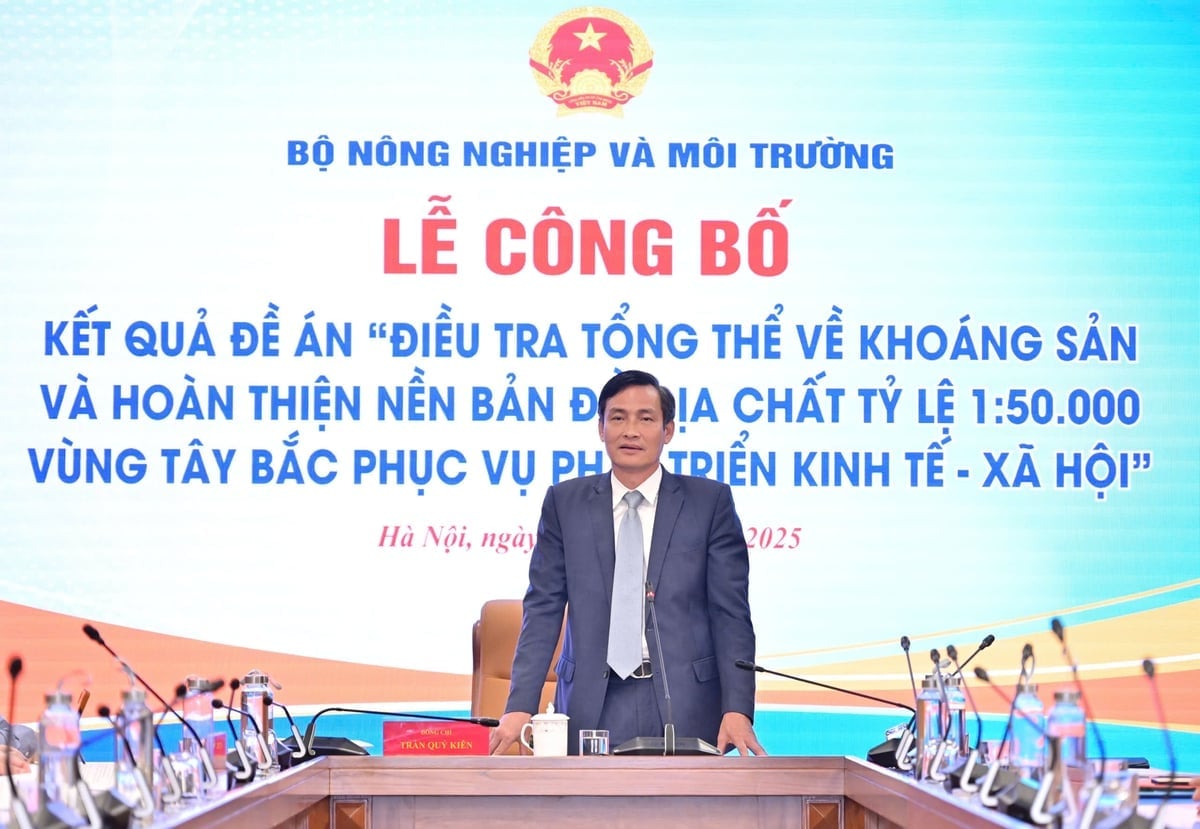
Deputy Minister Tran Quy Kien commended the perseverance, dedication, and intellectual contributions of numerous stakeholders, particularly those operating in the field of geology. Photo: Nguyen Thuy.
The Deputy Minister praised the concerted effort of various scientists, experts, and engineers, as well as the close coordination and support of the 14 provinces in the Northwest throughout the project's implementation.
"This project's achievements are the result of unwavering dedication, diligence, and intellectual contributions from various participants. Its success is the outcome of a challenging journey, marked by persistence and commitment. Behind every mountain pass and forest trail lies the effort and silent sacrifices of geologists," Deputy Minister Tran Quy Kien emphasized.
According to Deputy Minister Tran Quy Kien, the Northwest holds a strategically important position in terms of geopolitics, economy, and environment, while also boasting rich mineral potential. However, inefficient and unsustainable resource exploitation poses a pressing challenge for mineral resource management in the region.
With the aim of fully utilizing the survey results and unlocking the vast potential of mineral resources, Deputy Minister Kien requested local governments to capitalize on the provided geological and mineral databases. These resources can support socio-economic development planning, promote investment, and maintain sustainable mineral exploitation.
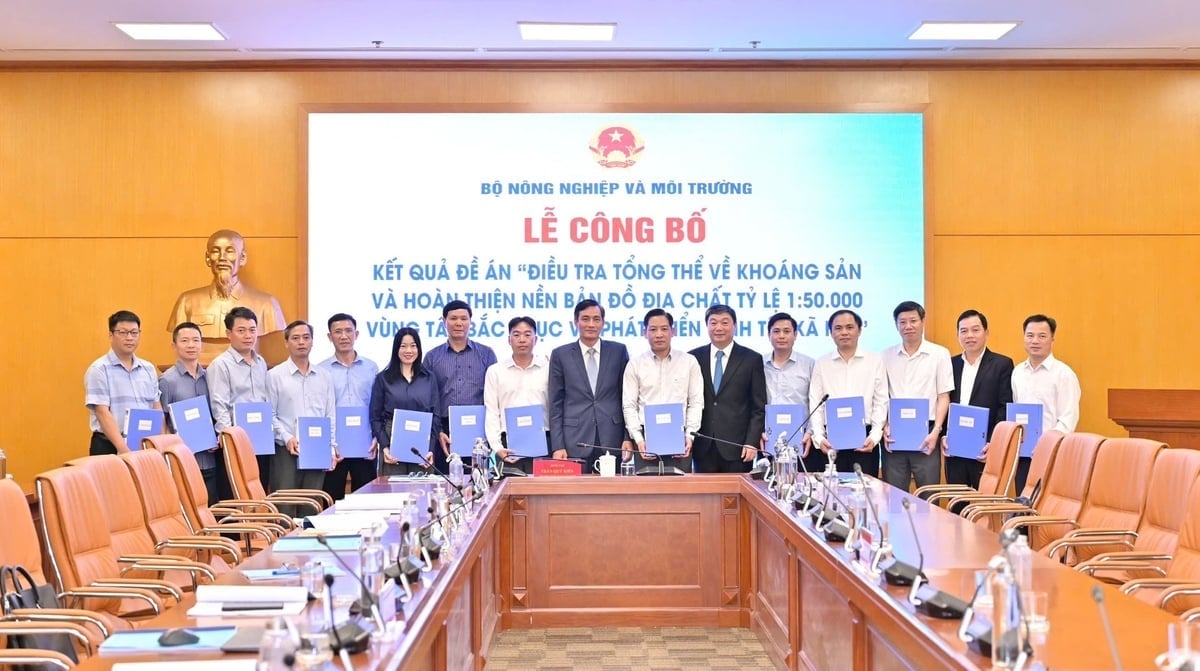
The Deputy Minister of Agriculture and Environment delivered the project's results to 14 provinces in the Northwest with the goal of supporting socio-economic development planning, promoting investment, and maintaining sustainable mineral exploitation. Photo: Nguyen Thuy.
On the other hand, the Deputy Minister requested that specialized agencies, local governments, and businesses continue strengthening cooperation and enhancing the application of information technology and digital transformation in mineral resource management. He also emphasized the need to adopt advanced technologies in mineral exploration and extraction, improve monitoring capacity, and promptly detect and prevent illegal mining activities to protect Vietnam's natural resources as well as the environment.
"The Ministry of Agriculture and Environment is committed to providing ongoing support and facilitating the implementation of future tasks. We aim to bring research findings into practical application, thereby contributing to the development of the Northwest region and the sustainable socio-economic growth of the nation as a whole," Deputy Minister Tran Quy Kien affirmed.
Translated by Nguyen Hai Long
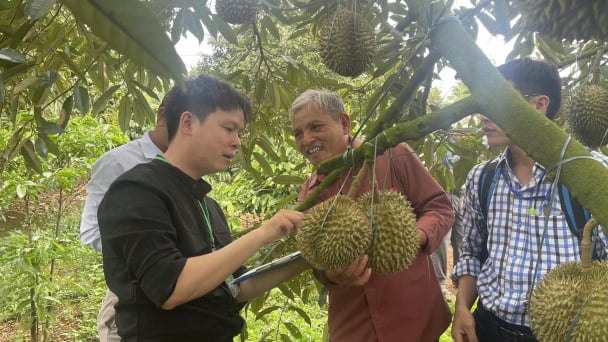
(VAN) For the durian industry to succeed, the value chain must fulfill its commitments to the government, the community, and international partners.
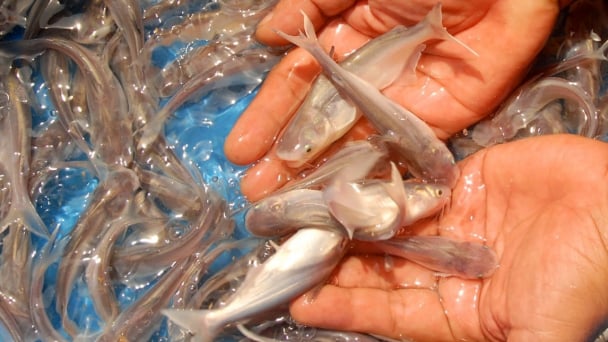
(VAN) Vaccinating juvenile pangasius helps reduce disease, antibiotic use, and farming costs, increasing profits for export-oriented farmers in An Giang.

(VAN) Due to a limited supply of workforce and competitive recruitment requirements, businesses struggle to retain talented veterinary human resources.

(VAN) WOAH’s guidance aims to mitigate disease risks through a One Health approach that balances economic, conservation, and public health interests.

(VAN) Ms. Nguyen Thi Dung, Deputy Director of Ngoc Hoang Cooperative, shared about the journey of bringing dragon fruit to Europe, achieving annual revenues in the billions of VND.

(VAN) Bamboo products from Thang Tho Bamboo Cooperative have reached many countries around the world, while also creating jobs for local workers.

(VAN) The Management Board of Con Dao National Park reported that a green sea turtle, tagged in the Philippines, has traveled thousands of kilometers to lay 84 eggs on Bay Canh Islet.